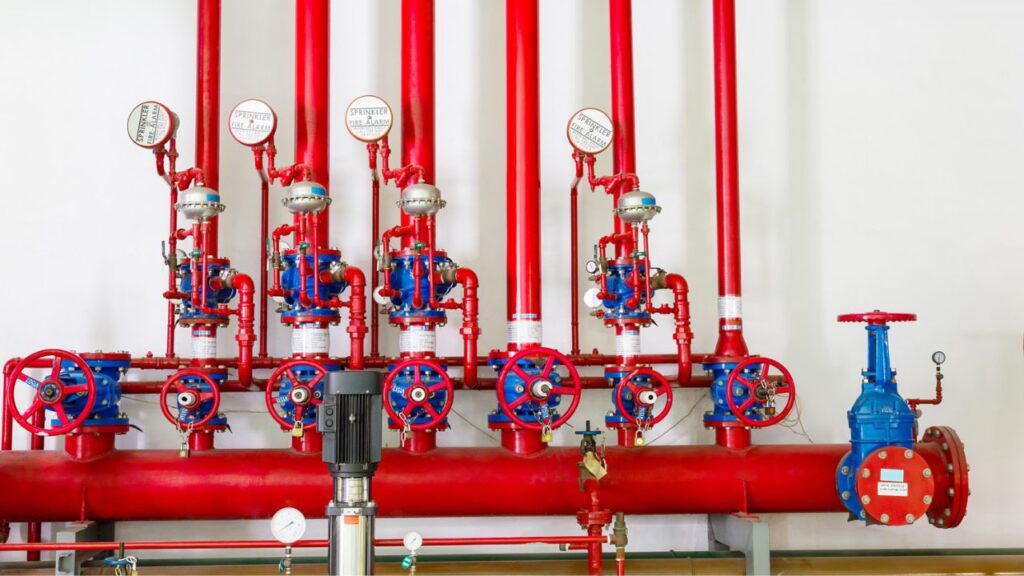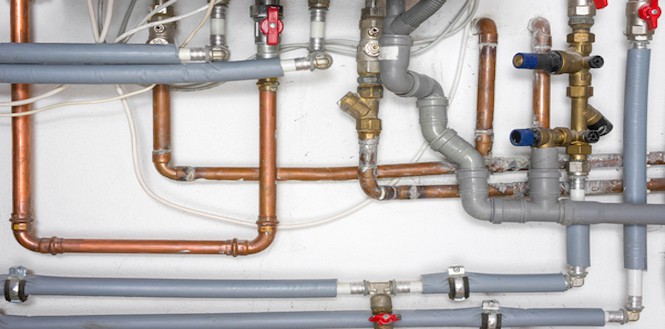Exploring The Layout of Your House's Plumbing System
Exploring The Layout of Your House's Plumbing System
Blog Article
We've come across the article pertaining to The Inner Workings of Your Home's Plumbing down the page on the web and figured it made perfect sense to talk about it with you on my blog.

Understanding just how your home's plumbing system works is essential for each home owner. From supplying tidy water for drinking, food preparation, and showering to safely eliminating wastewater, a properly maintained plumbing system is vital for your family's health and wellness and convenience. In this thorough guide, we'll check out the detailed network that comprises your home's pipes and deal tips on maintenance, upgrades, and managing usual concerns.
Introduction
Your home's pipes system is greater than simply a network of pipelines; it's a complex system that ensures you have access to tidy water and reliable wastewater removal. Knowing its elements and exactly how they interact can help you stop expensive fixings and ensure whatever runs smoothly.
Fundamental Parts of a Plumbing System
Pipes and Tubing
At the heart of your pipes system are the pipes and tubes that bring water throughout your home. These can be made of various products such as copper, PVC, or PEX, each with its benefits in terms of sturdiness and cost-effectiveness.
Components: Sinks, Toilets, Showers, and so on.
Fixtures like sinks, toilets, showers, and bathtubs are where water is used in your home. Recognizing how these components attach to the plumbing system assists in diagnosing problems and preparing upgrades.
Shutoffs and Shut-off Factors
Valves control the flow of water in your plumbing system. Shut-off valves are vital throughout emergency situations or when you require to make repair services, permitting you to separate parts of the system without interrupting water circulation to the whole residence.
Water Supply System
Main Water Line
The primary water line links your home to the metropolitan supply of water or an exclusive well. It's where water enters your home and is dispersed to various components.
Water Meter and Stress Regulatory Authority
The water meter actions your water use, while a pressure regulatory authority ensures that water moves at a safe pressure throughout your home's plumbing system, stopping damage to pipelines and fixtures.
Cold Water vs. Warm water Lines
Recognizing the distinction between cold water lines, which supply water straight from the major, and warm water lines, which carry warmed water from the water heater, assists in troubleshooting and preparing for upgrades.
Drain System
Drain Piping and Traps
Drain pipes carry wastewater far from sinks, showers, and bathrooms to the sewer or septic tank. Catches protect against drain gases from entering your home and likewise trap particles that might create obstructions.
Air flow Pipelines
Air flow pipelines permit air into the drain system, protecting against suction that can reduce drainage and create catches to empty. Correct air flow is crucial for maintaining the honesty of your pipes system.
Importance of Correct Drain
Ensuring proper drainage protects against back-ups and water damage. Routinely cleaning up drains and preserving traps can protect against pricey repair work and extend the life of your pipes system.
Water Heating Unit
Kinds Of Hot Water Heater
Water heaters can be tankless or standard tank-style. Tankless heating systems warm water as needed, while tanks store warmed water for instant use.
Updating Your Pipes System
Reasons for Updating
Upgrading to water-efficient fixtures or changing old pipes can enhance water quality, minimize water costs, and enhance the value of your home.
Modern Pipes Technologies and Their Benefits
Discover innovations like clever leakage detectors, water-saving commodes, and energy-efficient water heaters that can conserve cash and reduce environmental influence.
Expense Factors To Consider and ROI
Calculate the in advance expenses versus lasting cost savings when considering pipes upgrades. Numerous upgrades spend for themselves via minimized energy costs and fewer repair services.
Just How Water Heaters Connect to the Pipes System
Comprehending just how water heaters attach to both the cold water supply and hot water circulation lines helps in identifying problems like inadequate hot water or leaks.
Maintenance Tips for Water Heaters
Regularly flushing your hot water heater to get rid of sediment, checking the temperature setups, and inspecting for leaks can expand its lifespan and improve energy efficiency.
Common Plumbing Issues
Leaks and Their Reasons
Leakages can take place as a result of maturing pipelines, loosened installations, or high water stress. Attending to leaks promptly prevents water damages and mold and mildew growth.
Clogs and Clogs
Clogs in drains pipes and toilets are typically caused by purging non-flushable things or a build-up of oil and hair. Using drainpipe screens and being mindful of what goes down your drains pipes can protect against clogs.
Indications of Plumbing Issues to Expect
Low tide pressure, slow-moving drains pipes, foul odors, or unusually high water costs are indicators of possible plumbing troubles that ought to be dealt with promptly.
Plumbing Upkeep Tips
Regular Evaluations and Checks
Arrange annual plumbing examinations to capture issues early. Search for indicators of leaks, deterioration, or mineral build-up in faucets and showerheads.
DIY Maintenance Tasks
Easy jobs like cleaning faucet aerators, checking for toilet leaks utilizing color tablet computers, or insulating exposed pipes in cool environments can stop significant pipes problems.
When to Call a Specialist Plumbing Technician
Know when a pipes issue requires expert expertise. Trying complex fixings without correct understanding can result in more damage and greater repair work expenses.
Tips for Lowering Water Use
Easy behaviors like repairing leakages without delay, taking shorter showers, and running complete lots of laundry and recipes can conserve water and lower your utility expenses.
Eco-Friendly Pipes Options
Take into consideration sustainable pipes products like bamboo for floor covering, which is durable and green, or recycled glass for counter tops.
Emergency situation Preparedness
Actions to Take During a Pipes Emergency situation
Know where your shut-off shutoffs lie and just how to shut off the supply of water in case of a ruptured pipe or significant leak.
Importance of Having Emergency Situation Contacts Convenient
Keep get in touch with details for local plumbers or emergency situation services readily available for quick reaction during a plumbing dilemma.
Ecological Influence and Conservation
Water-Saving Fixtures and Appliances
Setting up low-flow faucets, showerheads, and bathrooms can substantially lower water use without sacrificing performance.
Do It Yourself Emergency Fixes (When Suitable).
Short-lived solutions like making use of air duct tape to patch a leaking pipeline or positioning a container under a trickling tap can decrease damages until a professional plumbing arrives.
Conclusion.
Understanding the anatomy of your home's pipes system empowers you to keep it properly, saving money and time on repairs. By following regular upkeep routines and staying notified regarding contemporary plumbing modern technologies, you can guarantee your plumbing system runs successfully for many years to find.
Exploring Your Homes Plumbing Anatomy
Water Supply System
Main Water Line: This is where water enters your home from the municipal supply or a private well. Water Meter: Typically located near where the main water line enters the property, it measures the amount of water used. Shutoff Valve: It s crucial to know where this is in case of emergencies. It allows you to turn off the water supply to the entire house. Pipes and Fittings: These distribute water throughout your home. Materials can include copper, PVC, or PEX. Drain-Waste-Vent (DWV) System
Drains: Located in sinks, showers, and tubs, these carry wastewater away. Traps: U-shaped pipes under sinks that hold standing water, blocking sewer gases from entering the home. Vents: Pipes that lead from the DWV system to the outside, preventing vacuum formation and allowing gases to escape. Sewer Line: Carries all wastewater from the home to the municipal sewer system or a septic tank. Fixtures and Appliances
Sinks, Toilets, and Showers Dishwashers and Washing Machines Water Heaters Maintenance Tips
Regularly check for leaks in exposed pipes and around fixtures. Inspect the water heater annually for signs of wear. Clean drains and traps to prevent clogs and odors. Know how to shut off water to individual fixtures. When to Call a Professional
Major leaks or burst pipes Installation of new pipes or fixtures Septic tank issues Remodeling projects that involve plumbing changes Conclusion
Understanding the anatomy of your home's plumbing is key to maintaining a functional and efficient system. Regular checks and knowing when to call in the experts can save you time, money, and stress.
https://www.mavyn.com/blog/exploring-your-homes-plumbing-anatomy

Hopefully you liked our excerpt on . Thanks a lot for taking a few minutes to read our blog. Liked our entry? Please quickly share it. Let others discover it. Thanks for taking the time to read it.
Automated Marketing Report this page